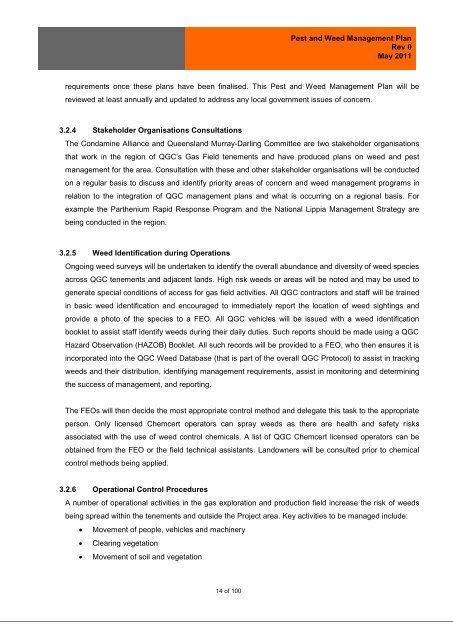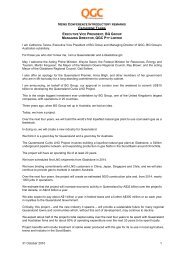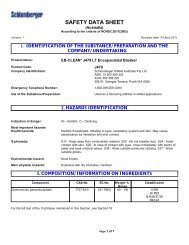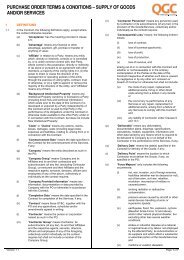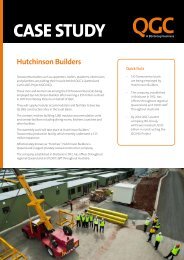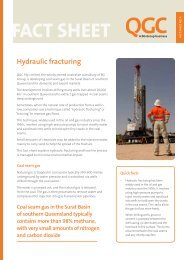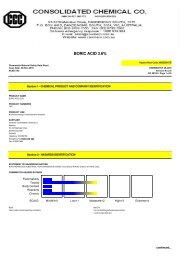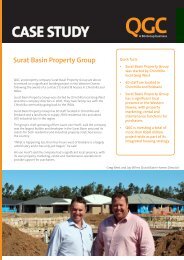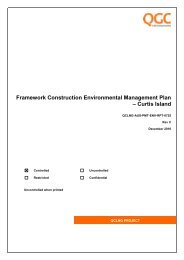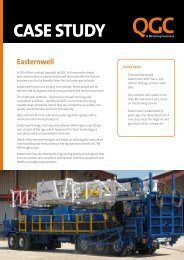Pest and Weed Management Plan - QGC
Pest and Weed Management Plan - QGC
Pest and Weed Management Plan - QGC
You also want an ePaper? Increase the reach of your titles
YUMPU automatically turns print PDFs into web optimized ePapers that Google loves.
<strong>Pest</strong> <strong>and</strong> <strong>Weed</strong> <strong>Management</strong> <strong>Plan</strong>Rev 0May 2011requirements once these plans have been finalised. This <strong>Pest</strong> <strong>and</strong> <strong>Weed</strong> <strong>Management</strong> <strong>Plan</strong> will bereviewed at least annually <strong>and</strong> updated to address any local government issues of concern.3.2.4 Stakeholder Organisations ConsultationsThe Condamine Alliance <strong>and</strong> Queensl<strong>and</strong> Murray-Darling Committee are two stakeholder organisationsthat work in the region of <strong>QGC</strong>‟s Gas Field tenements <strong>and</strong> have produced plans on weed <strong>and</strong> pestmanagement for the area. Consultation with these <strong>and</strong> other stakeholder organisations will be conductedon a regular basis to discuss <strong>and</strong> identify priority areas of concern <strong>and</strong> weed management programs inrelation to the integration of <strong>QGC</strong> management plans <strong>and</strong> what is occurring on a regional basis. Forexample the Parthenium Rapid Response Program <strong>and</strong> the National Lippia <strong>Management</strong> Strategy arebeing conducted in the region.3.2.5 <strong>Weed</strong> Identification during OperationsOngoing weed surveys will be undertaken to identify the overall abundance <strong>and</strong> diversity of weed speciesacross <strong>QGC</strong> tenements <strong>and</strong> adjacent l<strong>and</strong>s. High risk weeds or areas will be noted <strong>and</strong> may be used togenerate special conditions of access for gas field activities. All <strong>QGC</strong> contractors <strong>and</strong> staff will be trainedin basic weed identification <strong>and</strong> encouraged to immediately report the location of weed sightings <strong>and</strong>provide a photo of the species to a FEO. All <strong>QGC</strong> vehicles will be issued with a weed identificationbooklet to assist staff identify weeds during their daily duties. Such reports should be made using a <strong>QGC</strong>Hazard Observation (HAZOB) Booklet. All such records will be provided to a FEO, who then ensures it isincorporated into the <strong>QGC</strong> <strong>Weed</strong> Database (that is part of the overall <strong>QGC</strong> Protocol) to assist in trackingweeds <strong>and</strong> their distribution, identifying management requirements, assist in monitoring <strong>and</strong> determiningthe success of management, <strong>and</strong> reporting.The FEOs will then decide the most appropriate control method <strong>and</strong> delegate this task to the appropriateperson. Only licensed Chemcert operators can spray weeds as there are health <strong>and</strong> safety risksassociated with the use of weed control chemicals. A list of <strong>QGC</strong> Chemcert licensed operators can beobtained from the FEO or the field technical assistants. L<strong>and</strong>owners will be consulted prior to chemicalcontrol methods being applied.3.2.6 Operational Control ProceduresA number of operational activities in the gas exploration <strong>and</strong> production field increase the risk of weedsbeing spread within the tenements <strong>and</strong> outside the Project area. Key activities to be managed include: Movement of people, vehicles <strong>and</strong> machinery Clearing vegetation Movement of soil <strong>and</strong> vegetation14 of 100


